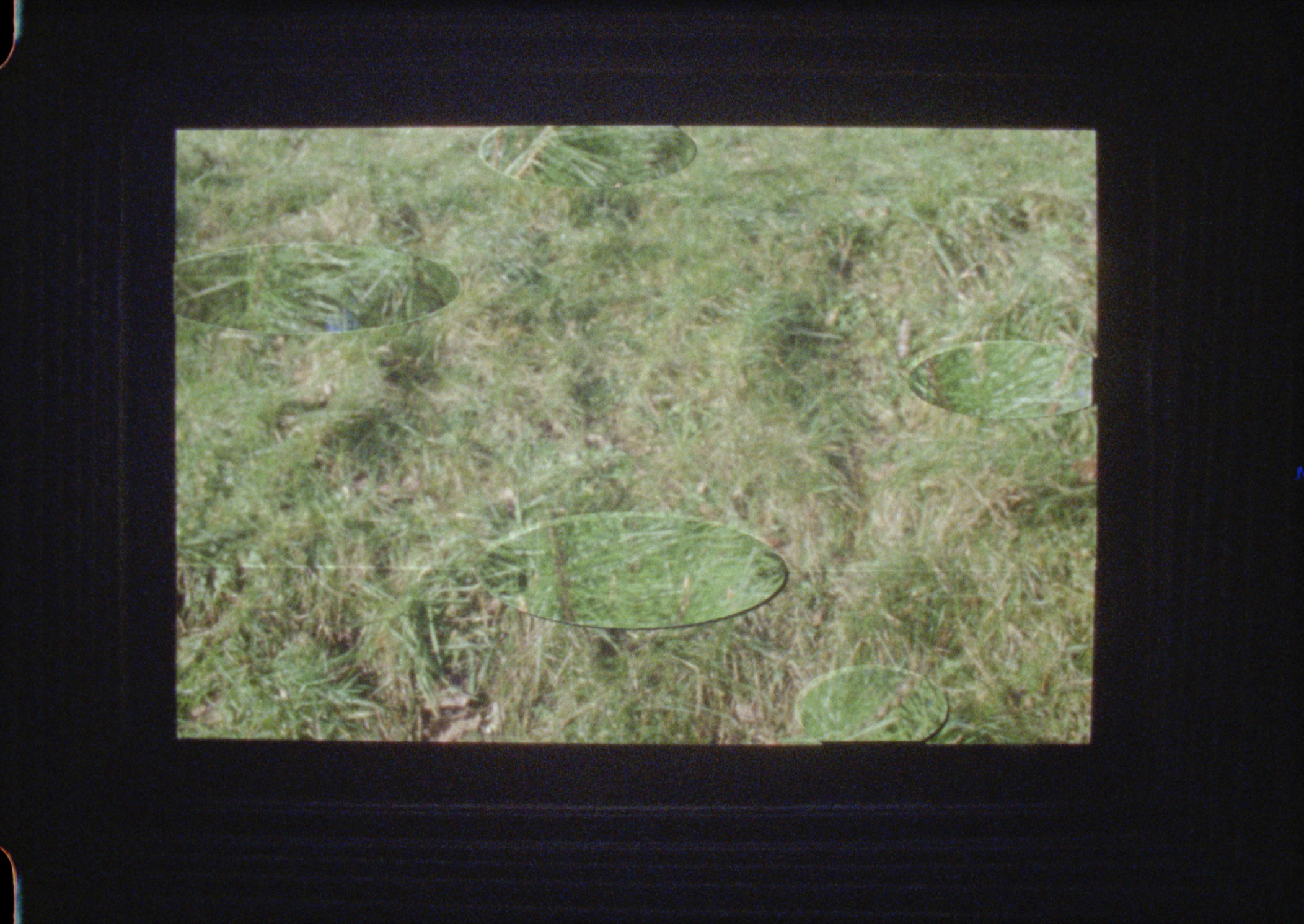
rough cut botanical (2022) interweaves multiple images of plant and animal life, while a voice speaks to the materiality of its subject matter and to film itself. Inspired by audio description, it playfully explores how they may speak their space together. Shot on 16mm, the film uses a matte box, an old cinematic technique to create multiple exposures.
Credits:
Camera: Wendy Kirkup
Second Camera: Alex Hetherington
Sound: Stevie Jones
Words: Wendy Kirkup/Juliana Capes
Voice: Nicole Kovacs
English to Spanish translation for subtitles: Flora Leask Arizpe

Supported by Creative Scotland Open Fund Award.






Screenings:
2023
Edinburgh International Film Festival, Scotland.
2023
Braziers International Film Festival, UK.
2023
Alchemy Film and Moving Image Festival, Scotland.
2023
61st Ann Arbor Film Festival, Michigan, USA
61st Ann Arbor Film Festival Tour, USA
2022
Biophilia International Film Festival, Germinate, intertwine and flourish, Mexico City and Oaxaca.
2022
Visions in the Nunnery, Bow Arts, London. Selected by Patrick Goddard.







rough cut botanical
Text by Anna Souter
Wendy Kirkup’s 16mm film rough cut botanical is a lyrical reflection on symbiosis, intimacy, and interrelation. Images of plant life are interwoven with shots of water and sky, composing a tender portrait of interconnected ecosystems.
The film is shot using a Bolex camera onto which is fixed a matte box. This device is used to hold mattes: cards with cut-out shapes through which film is exposed. The concertina-like interior of the box is visible in many of the final shots, providing a frame to Kirkup’s images throughout the finished film. As the piece unfolds, light filters in or is blocked entirely, creating sun-spots, shadows, and blackouts within the matte box, adding to the visual rhythm of the work. The slightly dusty folds of the box root the video work within its own processes of making, drawing attention to the materiality of film-making and emphasising the physical roles of light, apparatus, and chemical transformation at the heart of analogue film.
The matte box and the rewindable mechanism of the Bolex camera offer a vehicle for creating multiple exposures, utilizing the materiality of analogue film, which can pass through the camera multiple times. The piece reveals layers of complementary or contrasting imagery through a series of ovoid openings. rough cut botanical is a meditation on perforation; on the many ways in which lives and matter bleed into each other, through stomata, pore, and lens. Featuring both wild and cultivated plants, as well as skin, fur, and other bodily surfaces, the film speaks to the intimate relationships between vegetal and human beings.
The voiceover, which is inspired by audio description techniques, provides a poetic and playful commentary on both the material processes and subject matter of the film, emphasising the inextricable links between these elements. The script revels in the lushness of language, playing with word association and pushing language to the point where definition breaks down and sensuous sounds overtake meaning.
Throughout rough cut botanical, the identity of the narrator remains obscure; is she the voice of a plant, a human being, or even the camera itself? “Blue bleeds into me through perforations, set against planes of light”, she states. “Water rushes through me, as it rushes through you.” Who are “me” and “you” in this context? Perhaps they are ultimately one and the same, light and matter filtering through our perforated bodies in an ongoing exchange.
rough cut botanical
Text by Alex Hetherington
Tacita Dean says she is “always filming things that are about to disappear”, while in many discussions and observations on her films and filmmaking she often speaks about “shooting blind”, in The Conversations Series (No.28) with curator Hans Ulrich Obrist, for example.
Transient objects, senses and subjects disappearing in seasonal time, moving to memory in living light. Birds, flowers, tides, smoke, trees, wings, heat, rain, skin and fur. Closing the dowser or shutting the len’s aperture favors a camera’s optics over the raw sight of the human eye. In my experience this is often a challenge, especially with early career film practitioners who don’t want to leave anything to chance and who put too much trust or rely on sight on their subject as experienced in real time.
Set up a camera scenario and close your eyes, I say. I think a lot about this too as my eyesight gets worse as I get older. I look now and think more about what I want to see, where I choose to focus. Shooting “blind” too considers the role of laboratory and the processes, chemicals and washes that translate coils of image-making in a negative past to declaration in a positive present. Luck plays a part too. And patience.
Wendy Kirkup’s uses of a series of complicated precisely cut mattes fixed to her Bolex clockwork camera with a matte box, for uses with a 10mm (wide) lens plays with a cinematic ‘game of consequence’, pure experiment and the filmic collage. I think too about the term blind that suggests that ‘sight’ (knowing, feeling, understanding, trust, visualizing, hallucinating, dreaming, a feel for things) comes from places other than the eye. Call it instinct. On the image plane apparitions from different ‘pasts’ are assembled together in punctures, folds, abrasions and synthesis. Light plays a part too, impure, it comes in often uninvited in bursts and different rhythms. Camera chimeras, exchanging the exposed with the unexposed, with the rewind key and repeated, multiple exposure, a tallying through time and numbering on frame counters, a counting-down which results in the creation of an impossible image. Fractured, vulnerable, damaged even. Evading real time. Liberated from real time. Not disappearing then after all, conjured to the surface, appearing.
I think too about how these matte box images speak about filmmaking’s plural actions, what it means to assemble images made from the bringing together of different impulses or intentions: technical and creative, and the representation of learning and experiencing through the camera as a collaborative device. So here they are, these things exist.







